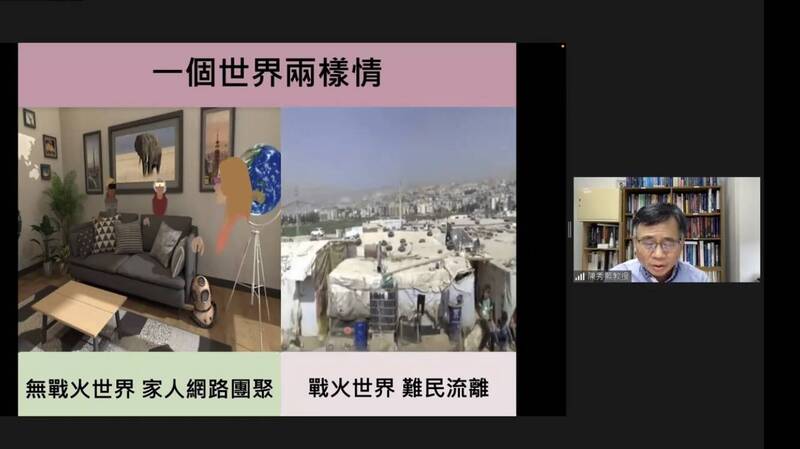Chen Xiuxi, a professor of the Department of Public Health at National Taiwan University, and others held the "Online Live Broadcast of Public Health and War Science". Chen Xiuxi explained that during the Chinese New Year reunion season, Wuhan pneumonia and the Ukrainian-Russian War prevent family reunions. Digital technology can be used to connect distant family members and promote happiness. .
(The picture is taken from the live broadcast)
[Reporter Lin Xiaoyun/Taipei Report] On the third day of the Lunar New Year, Chen Xiuxi, a professor of the Department of Public Health at National Taiwan University, and others held the "Online Live Broadcast of Public Health and War Science". The Ukrainian-Russian War prevented family reunion. Digital technology can be used to connect distant family members and promote a sense of happiness. When applied to medical care, it can alleviate the plight of care due to insufficient medical resources. For example, telemedicine services in France and Sweden have reached 30%.
Chen Xiuxi, Physician Xu Chenyang, Professor Chen Lisheng, Professor Yan Mingfang, Dr. Lin Tingyu, and Lecturer Cai Fangjun’s team discussed the Ukrainian-Russian war and the opportunity to promote digital Europe, digital technology and the reunion of war refugees, digital medical care to solve the medical care dilemma, digital freedom post-war reconstruction .
Please read on...
Chen Xiuxi analyzed that the Wuhan pneumonia epidemic and the crisis of the Ukrainian-Russian War are both obstacles to family reunion. However, with the help of virtual reality technology, distance restrictions can be eliminated, and distant family members can be connected with each other in various interactive modes, which can be applied to the world of war. The implementation of virtual reality technology to experience the life of refugees in 3D can arouse everyone's hidden heart. Empirical research has confirmed that virtual reality can effectively enhance the empathy emotion of VR experiencers towards refugees.
Chen Xiuxi said that for the needs of digital transformation and the reconstruction of digital freedom in Ukraine and Russia, the EU’s 2025 goal is to invest 3% of GDP in research and innovation, of which 10% will be invested in information and communication technology. Digital European medical transformation includes personalized medical care and care, Digital medical care such as tele-care models, digital twin drug development, and innovative clinical research. COVID-19 has caused shrinkage of medical resources, which has brought about an opportunity for the development of telemedicine. The use of telemedicine can alleviate the health gap and the plight of insufficient medical human resources.
Chen Xiuxi explained that digital medical care can help improve case tracking and care quality, but it is based on high-speed network coverage. Taking breast cancer screening, one of Sweden's famous advanced medical services, as an example, the network coverage in remote areas in the north is low, and breast cancer screening The start time of the inspection is late, and the Västerbotten telecare program in Sweden can be used as a medical digital transformation case. With the help of telemedicine, the uneven distribution of population and medical care and the difference in the time required for specialized care can be effectively alleviated.
The team believes that digital freedom will help rebuild the lives of war refugees. Digital transformation is based on high-speed network connections, and the establishment of refugee network connections relies on public-private partnerships. Improve refugee health and well-being and reduce health disparities.
Chen Xiuxi, a professor of the Department of Public Health at National Taiwan University, and others held the "Online Live Broadcast of Public Health and War Science". Chen Xiuxi explained that the digital European medical transformation, the application of digital technology to medical care can alleviate the care dilemma of insufficient medical resources, such as remote medical services in France and Sweden It has reached 30%.
(The picture is taken from the live broadcast)
